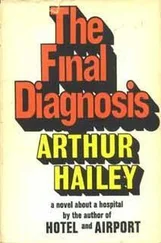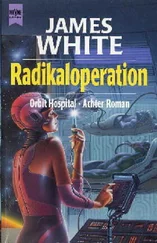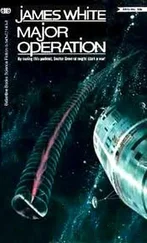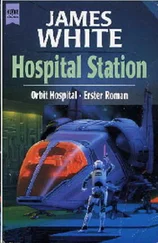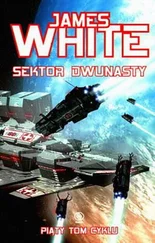“The situation was driving us out of our medical minds,” he went on, “because so far as we could see all of the conditions we had seen were curable. If we could have declared the planet a disaster area and moved in massive medical support, the problem would have been solved within a few years at most. But we had a delicate first-contact situation on our hands: the people were proud and independent and, at that time, still loyal and grateful to their emperor on Imperial Etla and to the people of all the other worlds called Etla that made up the empire for their continuing support. The arrival of massive medical aid from strangers would have been demeaning to them and might even have been mistaken by the onplanet imperial representative, who so far had avoided contact with the Monitor Corps, and the large military establishment he maintained, as a hostile invasion from space…”
In order to reassure the Etlan authorities regarding Federation intentions, and to discover why the medical aid sent to their ailing colony world was so small and infrequent, a Monitor vessel with a senior medical officer on board was sent to Imperial Etla. It was possible that distance had diminished the urgency of the plight of their sick brothers, but when the unarmed courier vessel signaled its approach and landed openly at the planetary capital’s spaceport, it was immediately surrounded by elements of the imperial guard.
The reason given for this apparently unfriendly act was that a xenophobic reaction could be expected from the less intelligent among the local population and the security of the visitors was of paramount importance. This was also why the ship’s crew, with the exception of their medical officer, should remain on board and make no attempt to communicate with anyone until the authorities had prepared the psychological ground.
Their medic was given the warmest of welcomes by the imperial advisors and interrogated in a manner both thorough and friendly about all aspects of the Federation while at the same time being accorded the honors normally reserved for a visiting head of state. Meanwhile the sensors on the courier vessel were uncovering some very disquieting information regarding what the broadcast media was referring to openly as the Plague Planet as well as obvious-obvious, that was, to the Corps’ political analyst on board-deficiencies in the administration and financial structure of the Etlan Empire.
Their first discovery was that the Plague Planet was out of sight but most definitely not out of mind. On every street intersection and at frequent intervals along the intercity roads there were display boards advertising the plight of their desperately ill brothers on Etla the Sick in graphic and often horrifying detail, all pleading for contributions for the relief of their suffering. Every one of the vision channels ran supporting stories at frequent intervals, and the appeal was invariably mentioned by candidates seeking political office. It was the most promoted and popular charity, not only on Imperial Etla but on every other planet of the empire, and the contributions were continuous and generous.
It was impossible to believe that the donations funded the dispatch of only one aid ship every ten years.
They already knew that the ship arrived, unloaded, and left without delay, because none of the crew would stay a moment longer than necessary on that planetary pesthole. The cargo was transferred to Imperial Representative Teltrenn’s estate, a large, parklike tract of land surrounding a palace and barracks whose perimeter was guarded by a heavily armed, elite force. The reason given for the military presence among the unarmed colonists, who were required to supply them with food and low-ranking support personnel, was that they were there to guard against a possible offworld invasion. At intervals of a few months, there seemed to be no great urgency about the process, Teltrenn traveled to distant parts of the colony world to distribute the new medication, information on its administration, and news of the continuing research being done on Imperial Etla.
It would have been faster and more efficient to supply the colonist medics with the new material and instructions simultaneously, but Teltrenn insisted on bringing it to them in person so that he could pass on the personal sympathy as well as the good wishes of their emperor.
This lack of urgency aroused the suspicions of Conway and the other Corps medics, who analyzed the various plague vectors going back over several decades. They found that many of the earlier diseases were disappearing, probably because the sufferers and their families were developing a natural resistance to them. But invariably a new disease appeared to replace the old, usually one involving visually horrifying skin eruptions, multiple limb deformities, or uncontrollable palsies that were, against all the laws of medical probability, rarely fatal.
All of the evidence pointed to the incredible and horrifying conclusion that the much loved and respected Imperial Representative Teltrenn was deliberately and systematically spreading diseases, not trying to cure them, and that the reason was financial.
Even the pennies donated by a poor but sympathetic population in response to a local disaster appeal could amount to a significant total, and the Etlans were a generous and caring people who were constantly being reminded of the dreadful plight of their brothers on Etla the Sick. Those continuing contributions from the population of fifty inhabited worlds were vast beyond belief, and with a single relief ship being dispatched every decade, it was obvious that only a tiny fraction of the total donations was going to the people for whom it was intended. Instead it was being treated as a covert form of taxation and diverted into the imperial treasury for the benefit of the emperor and the proliferating families and personal armies of his hereditary representatives.
This was not a situation that the Federation could tolerate, and when direct questions regarding the misappropriation of the funds were asked, on Etla the Sick and on Imperial Etla, Teltrenn and his emperor panicked. Missiles with chemical warheads-plainly they wanted to avoid the destruction of their spaceports by using nuclear devices-were directed at the Monitor vessels, which deployed their meteorite shields and escaped.
The medic who had been visiting Imperial Etla was never heard from again.
On the Plague Planet there was enough advance warning from the ship on Imperial Etla for the Monitor Corps personnel to be withdrawn safely before Lonvellin, who insisted that it was safe inside its ship’s screens, died in a nuclear fireball.
The emperor could not allow the truth of what he was doing to be known by the imperial citizens, so he blamed the Federation for what had happened on Etla the Sick, accusing it of the crimes he himself had been committing for over a century. He said that while the Monitor Corps personnel they had seen resembled human beings like themselves, he had discovered from one of them that the majority of their Galactic Federation was composed of visually horrifying, depraved, and sadistic monsters rendered even more terrible because of their high intelligence. For the first time in its long history the very existence of the Etlan Empire was being threatened from space, and their only defense was an all-out offensive war. The imperial propagandists and the xenophobia instilled into them from earliest childhood did the rest, and a vast, crusading war fleet was assembled.
“But we are neither stupid nor completely trusting when meeting strangers,” Stillman went on. “We do not tell them where we live until we are sure that they will be friendly visitors. On both Imperial Etla and here nobody with knowledge of the coordinates of Federation worlds was allowed to meet an Etlan. That is standard first-contact procedure. But one set of coordinates is known to every spacegoing medical officer in the Corps, those for Sector General, and the imperial advisors had a Corps medic in their hands.
Читать дальше




